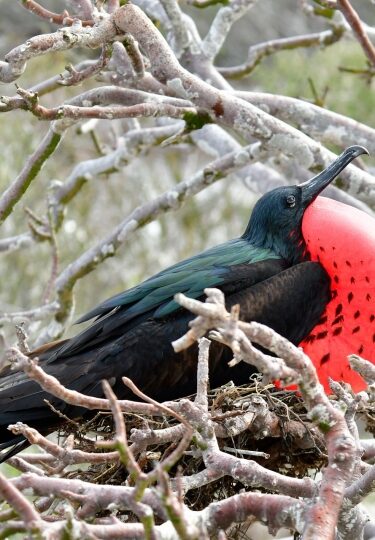South America is a birdwatcher’s paradise, with more species than any other continent. Brazil has almost 2,000 species alone, while Argentina can boast 1,000 and Chile has 500.
Many may already be familiar to you from their annual migration. Central America is a busy highway for birds traveling to and fro between North and South America.
However, here is a list of some of the more exotic South American bird species that do not roam that far from home. From the flightless greater rhea to the magnificent frigatebird, they bring a sense of wonder and new horizons to any visit.
Red-legged Cormorant (Poikilocarbo gaimardi)
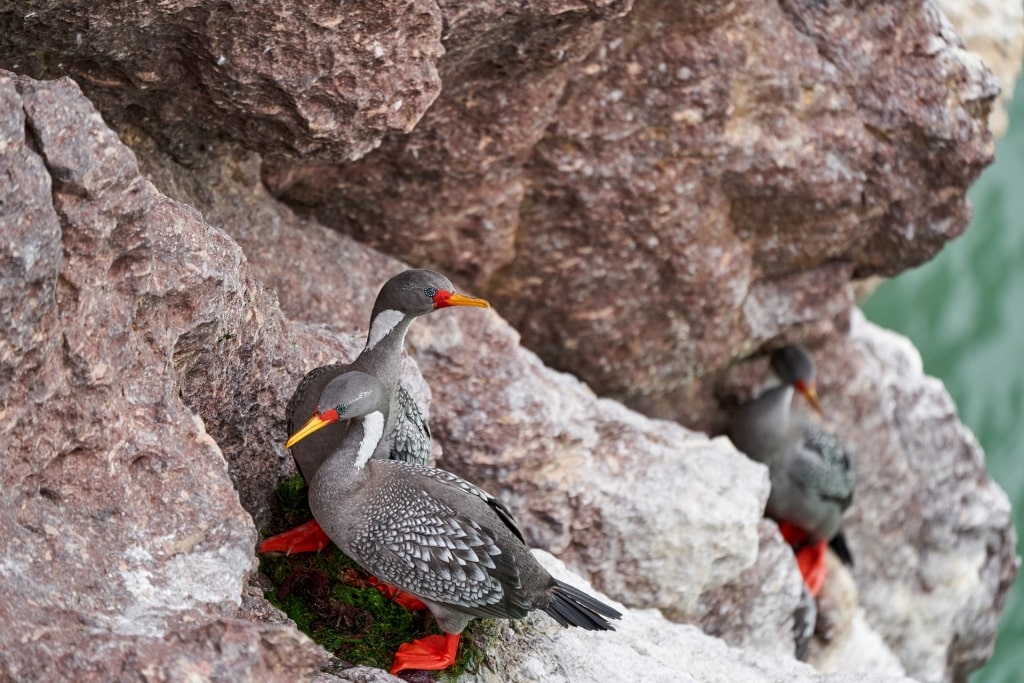
Red-legged Cormorant
This unusual cormorant stands out from others of the species in that it doesn’t spread its wings to dry out. It is also a solitary bird, hunting alone or in pairs.
Their red legs, white throat patch and yellow-red hooked beaks make these cormorants easy to identify. They are gray with a lighter color belly and stand about 30 inches tall.
Red-legged cormorants are found all along the Atlantic coast of Chile and around the Strait of Magellan in the extreme southern coast of Argentina. Look out for them nesting on rock cliffs, or resting on jetties.
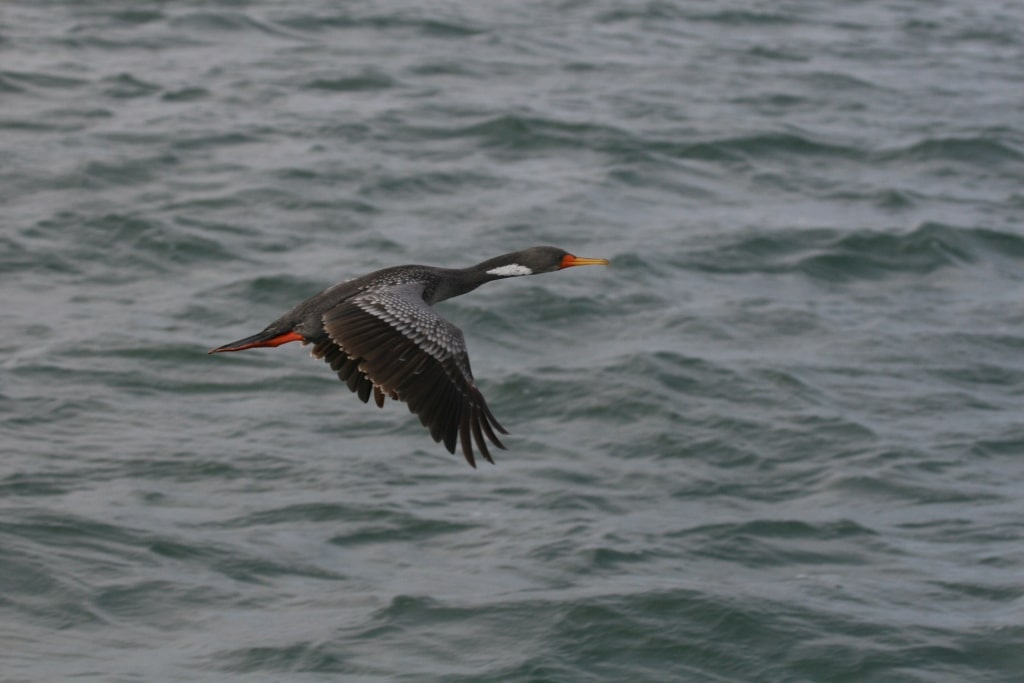
Red-legged Cormorant
They feed inshore, rarely more than a mile or so from home. Eels and anchovies make up their diet, along with some crustaceans.
The birds can dive up to 30ft underwater to catch prey, swimming at speed with webbed feet. Once out of the water, they flick any catch into the air to swallow it headfirst.
Southern Screamer (Chauna torquata)
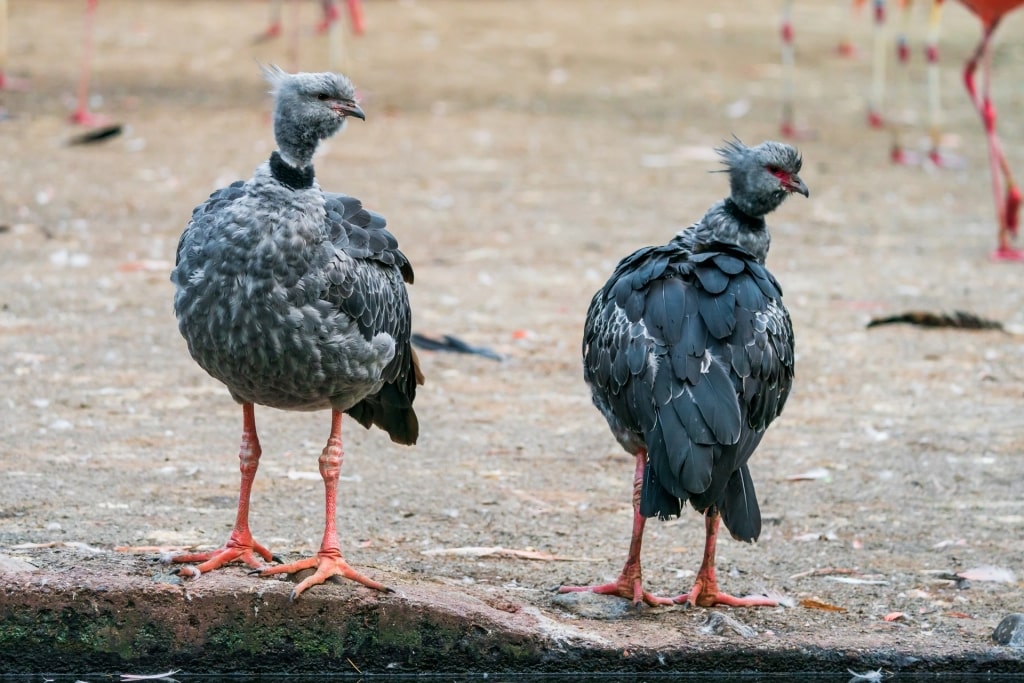
Southern Screamer
The southern screamer’s range extends from Peru through the south of Brazil to Uruguay and northern Argentina. Look for them in 100-strong flocks, with a strident warning call that can be heard two miles away—hence the name.
Only its mother would call a screamer a handsome bird. It has an oddly small head on a large body about the size of a goose, to which it is related
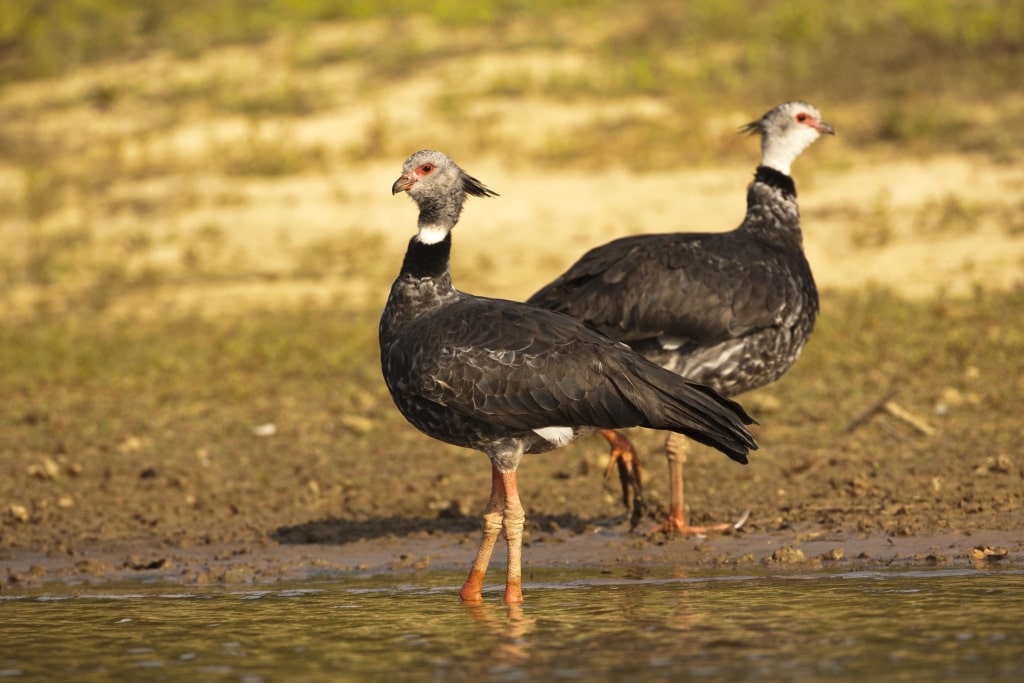
Southern Screamer
Southern screamers have large, long-toed webbed feet and can swim well, but prefer solid ground. The preferred habitat is open grasslands near water.
A mainly vegetarian diet of plants and seeds is augmented with some insects. Pairs mate for life and share all the tasks of nesting and raising chicks.
Screamers make for very poor eating themselves and are therefore fairly common. Like geese, their loud warning cry has made them popular for domestication as guard birds.
Greater Rhea (Rhea americana)
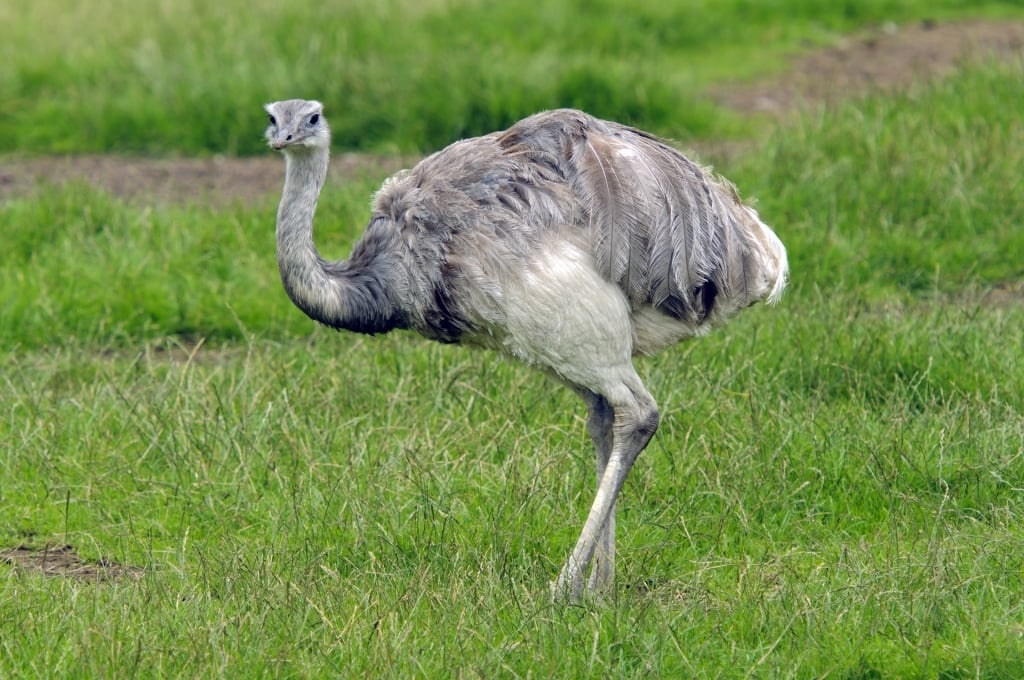
Greater Rhea
The largest bird in the Americas, never mind in South America, roams the open grasslands of Brazil, Uruguay and Argentina. Like an ostrich (a distant relative), it is a powerful runner and uses its large wings only for balance.
Rheas gather in large flocks and are so social they will join other herd animals, such as guanacos. The birds eat leaves, fruits and seeds, swallowing pebbles to help them digest tough cellulose.
A rhea is large enough to have few predators other than cougars or feral dogs. The main threat to the population is pesticides and loss of habitat to farming.
They can help farmers by eating insects, such as beetles, locusts, grasshoppers and even scorpions. However, they also have a taste for agricultural crops such as cabbage or chard.
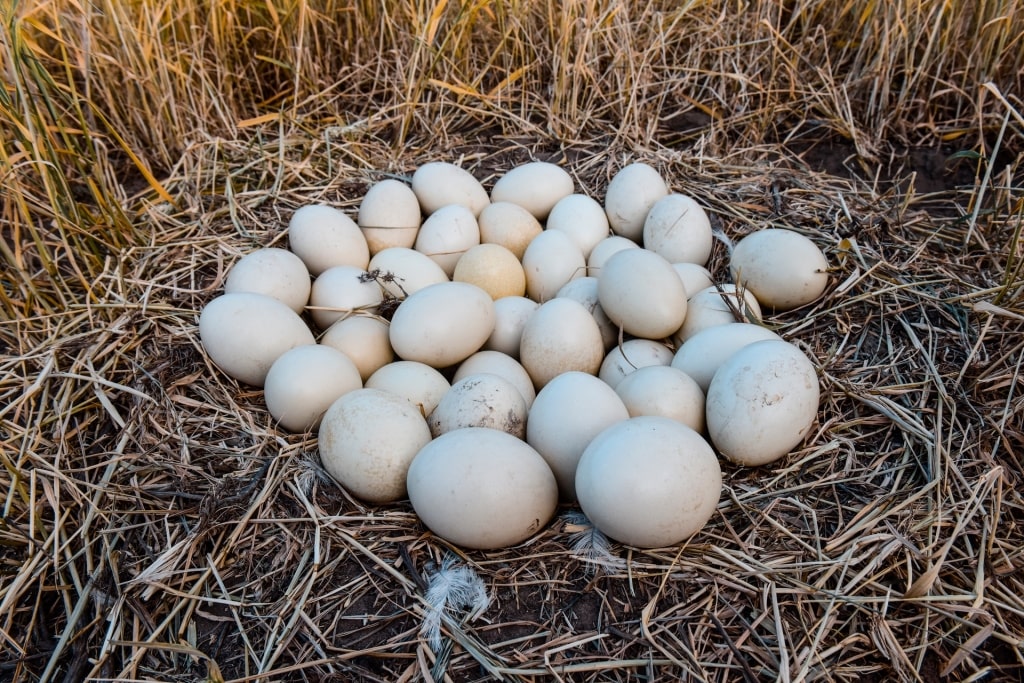
Greater Rhea eggs
Females mate with different males during the breeding season, leaving each with five to ten eggs. This means a male may end up tending a nest of up to 80 eggs from several females.
Chimango Caracara (Milvago chimango)
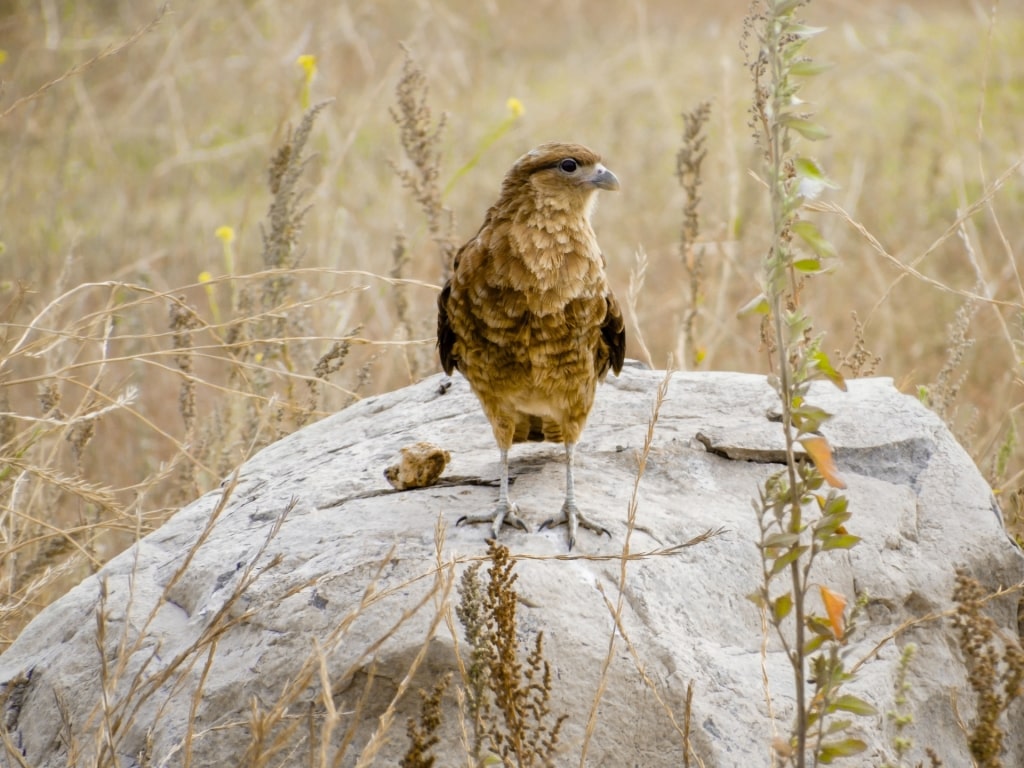
Chimango Caracara
This bird of prey is found from southern Brazil, through Uruguay and is very common in Argentina and Chile. It has even been seen on the Falkland Islands.
A type of falcon, it gets its name from a characteristic call. You’ll hear it mainly during the breeding season.
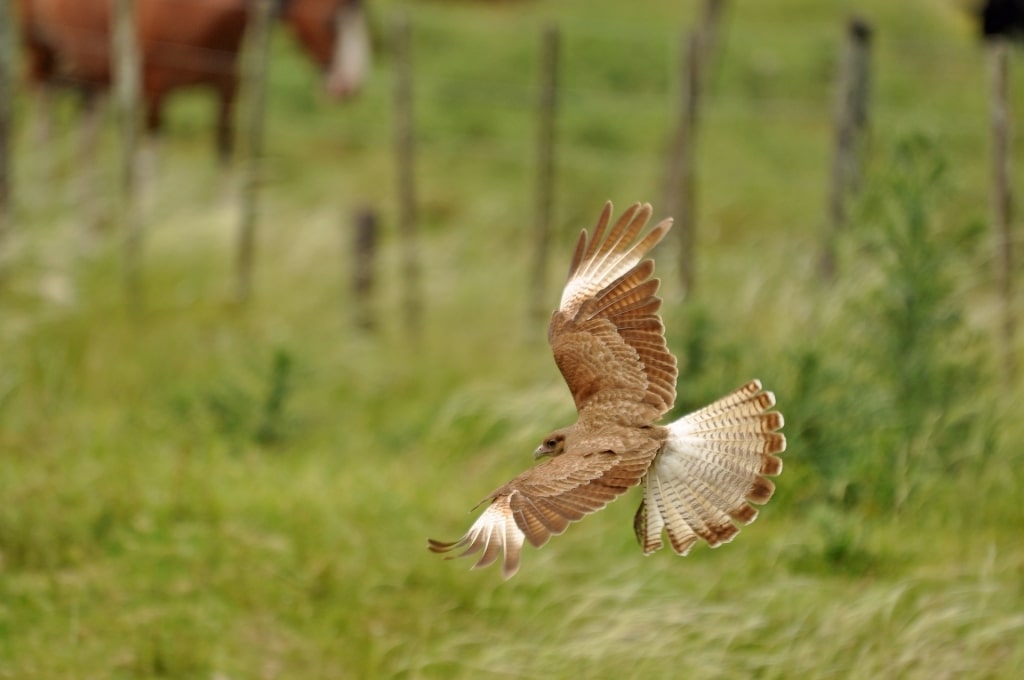
Chimango Caracara
You will see them in open areas, such as shrubland, fields, and beaches in South America. They feed on carrion, invertebrates and small mammals as well as seeds and berries.
The species is benefiting from deforestation as it does well in disturbed areas. However, these birds do need dense vegetation, such as shrubs, to conceal their nests.
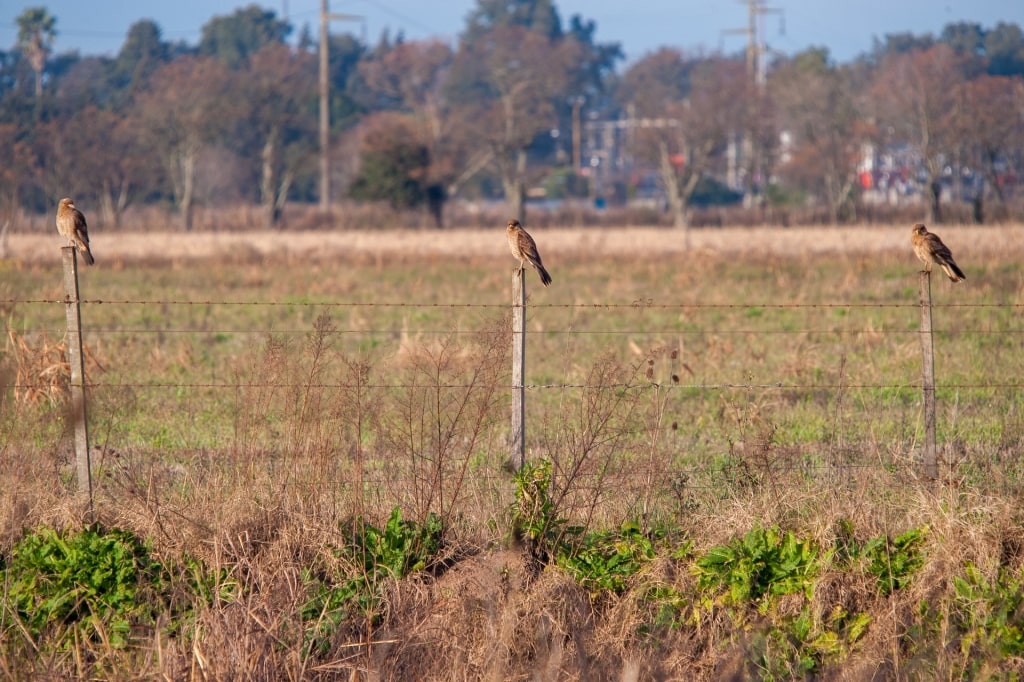
Chimango Caracara
In Buenos Aires or Santiago, groups of caracara often scavenge together in the parks. This crow-like habit of foraging on the ground makes them easy to spot.
The word “chimango” is Argentine slang as a term for someone with very bad taste who just follows the latest trends. This reflects both the abundance and aggressive behavior of the species.
Magnificent Frigatebird (Fregata magnificens)
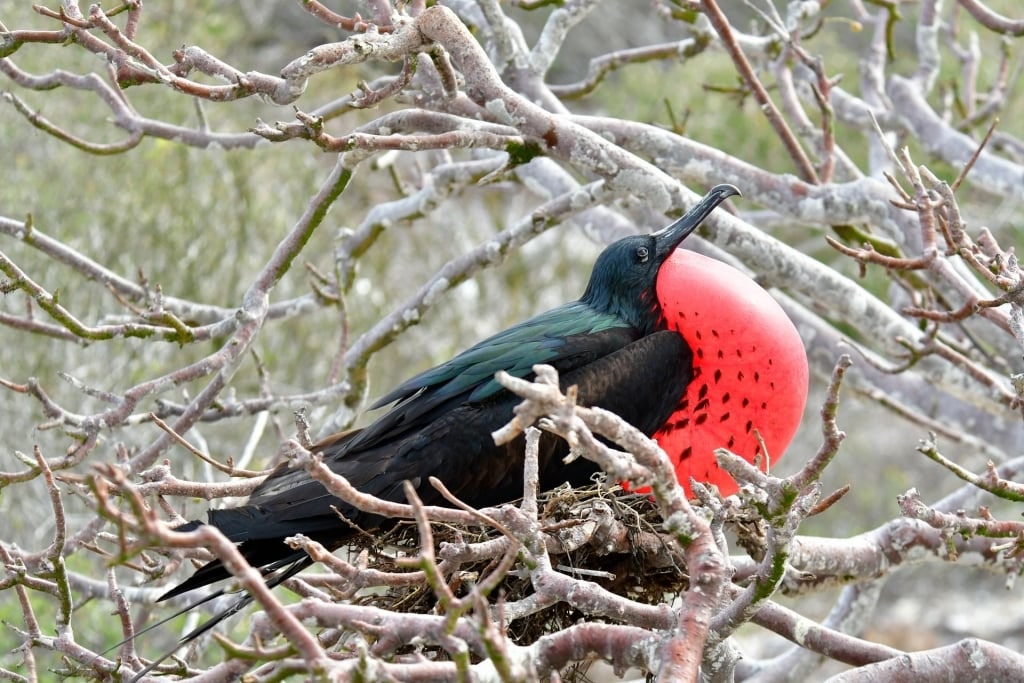
Magnificent Frigatebird
With its puffed-out red throat pouch during the breeding season, this largest of the frigate birds is immediately recognizable. You’ll see them all along the Atlantic coast of Brazil and in the Galápagos Islands.
They are notorious food thieves, often seen harassing other seabirds until they regurgitate their food. They’ll do this in flight, catching the meal before it hits the sea.
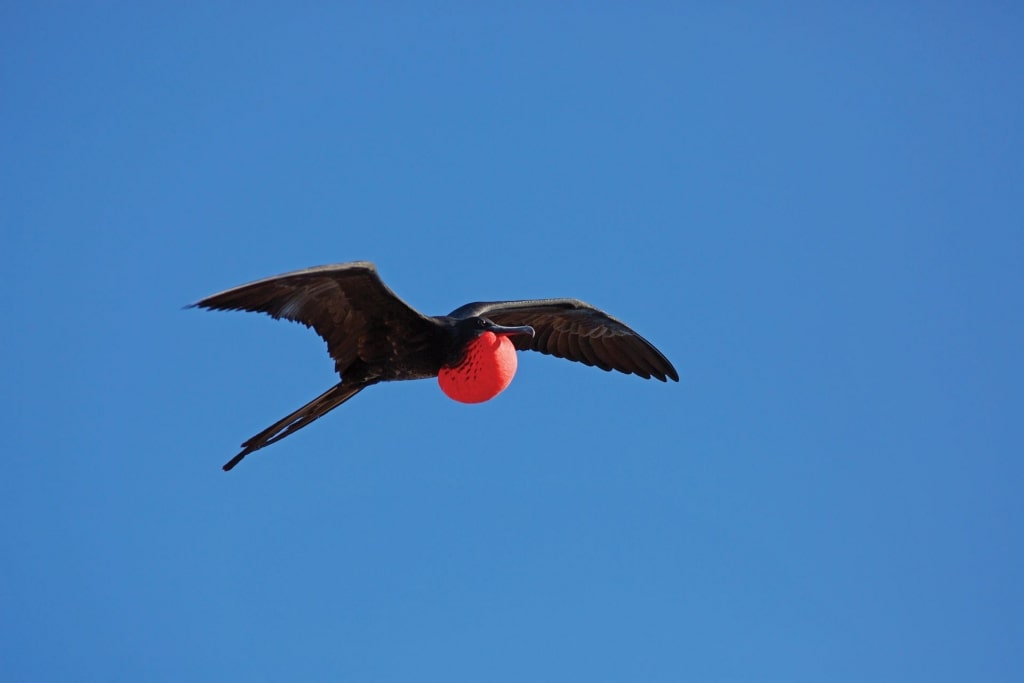
Magnificent Frigatebird
The wingspan of up to eight feet allows these South American birds to spend whole days and nights in flight. They will cover more than 100 miles between landings.
This talent for soaring flight led Charles Darwin to call them ‘the condor of the oceans”. They are also known as “Man-o’-Wars” or, because of their feeding habits, “pirate birds”.
The 2,000 or so magnificent frigatebirds on the Galápagos are genetically distinct from those elsewhere in the world. They have bred separately for hundreds of thousands of years.
Inca Tern (Larosterna inca)
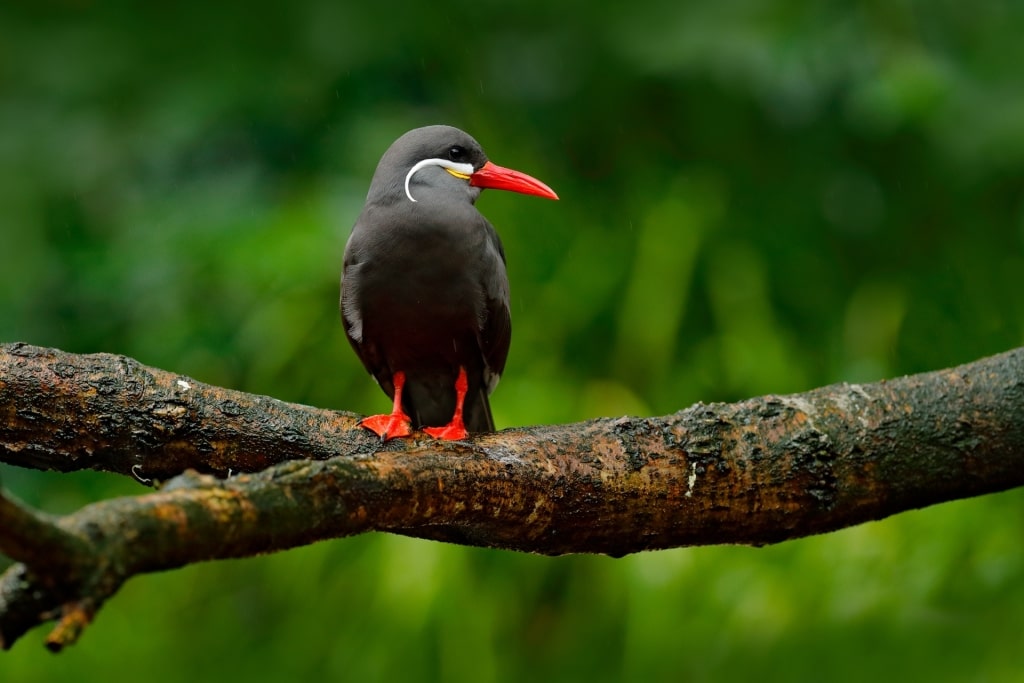
Inca Tern
This unusual seabird is notable for its white “Salvador Dali” mustache and reddish claws and beak. It is found along the Pacific Coast of South America, primarily in Peru and Chile.
Like other tern species, it lives on rocky cliff faces but its habitat is under threat from guano harvesting. Commercial fishing is also attacking the food supply.
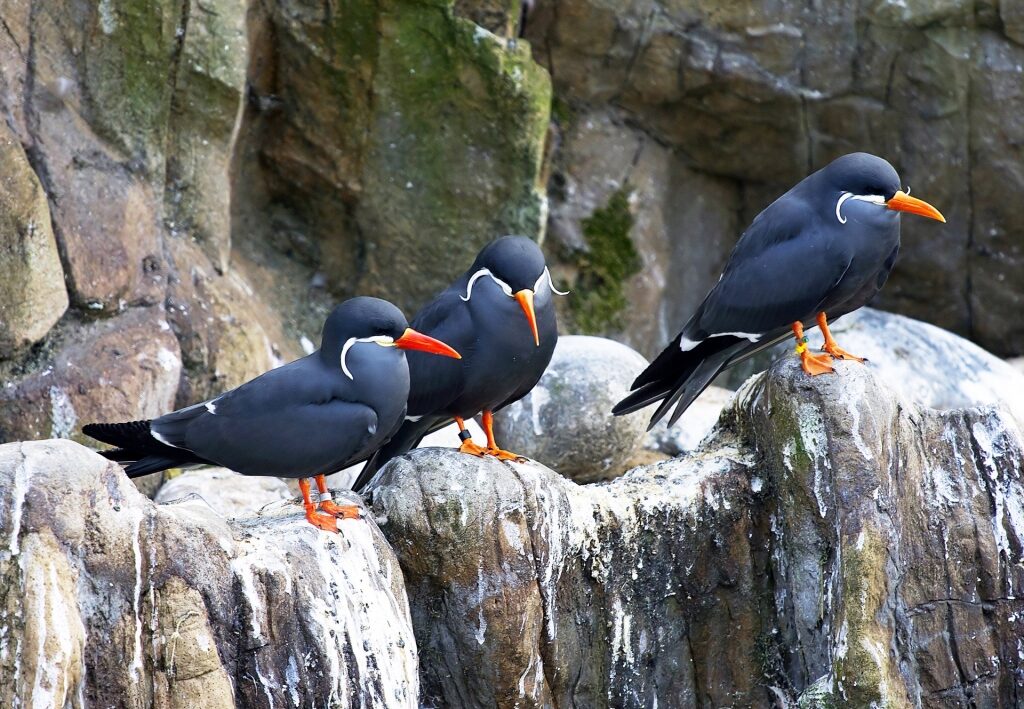
Inca Tern
Inca terns gather in large colonies of many thousand pairs. One or two eggs are laid twice a year in nests made in hollows and fissures.
Their call has been compared to a cat’s meow and it’s certainly distinctive. The noise of a large colony is particularly loud in the breeding season.
The Inca tern feeds on anchovies and other small fish carried by the Humboldt Current. A sharp, pointed beak is perfect for catching this prey.
Large flocks feed by plunge diving and dipping for fish near the surface. They will also steal fish scraps from sea lions.
Waved Albatross (Phoebastria irrorata)
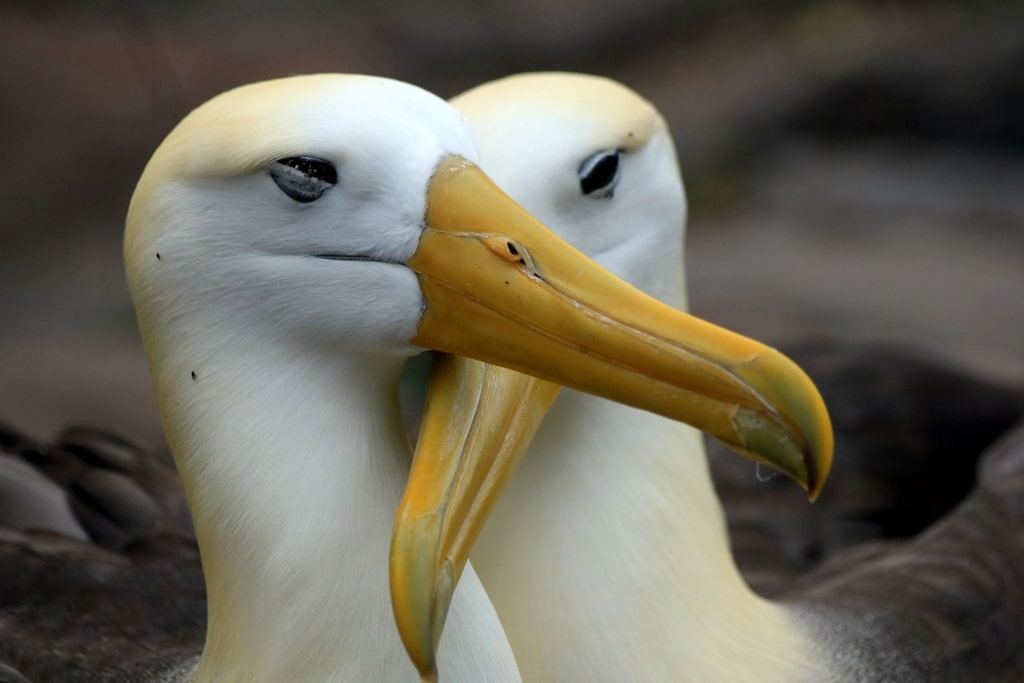
Waved Albatross
The Galapagos has many species of unusual birds but among the most exotic is the waved albatross. The only albatross species that prefers a warmer climate, it nests exclusively on the island of Española.
These Galapagos birds—which mate for life—start arriving in March. They produce a single egg that hatches between mid-April and July.
By January, the fledglings and their parents have left for the Pacific. It will be several years before the young birds return to mate in their turn.
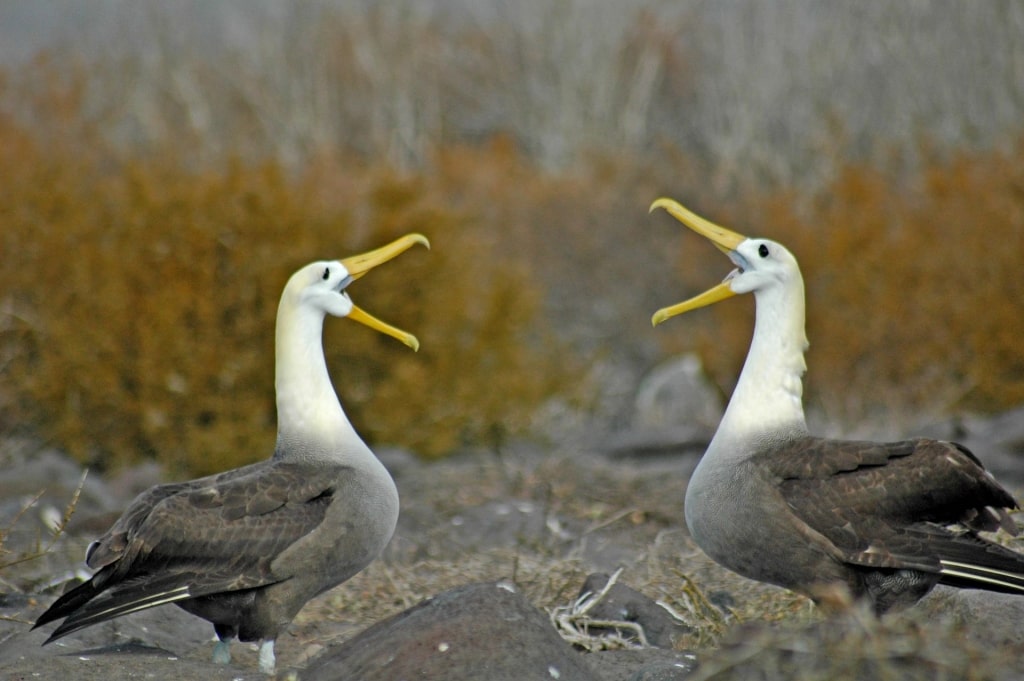
Waved Albatross
Mating involves a fascinating ritual of bill circling and clacking with a mooing call. Their distinctive long, bright yellow bills look even longer on the bird’s small heads.
Ungainly on land, even more so when landing, albatross prefer to launch themselves off cliffs for take-off. In the air, with their eight-foot wingspan, they can soar for hours.
At sea, you might spot countless birds forming vast rafts as they feed on fish, squid and crustaceans. They roam the coastal waters of some of the best countries in South America, such as Chile, Peru, Colombia, and Ecuador.
Andean Condor (Vultur gryphus)
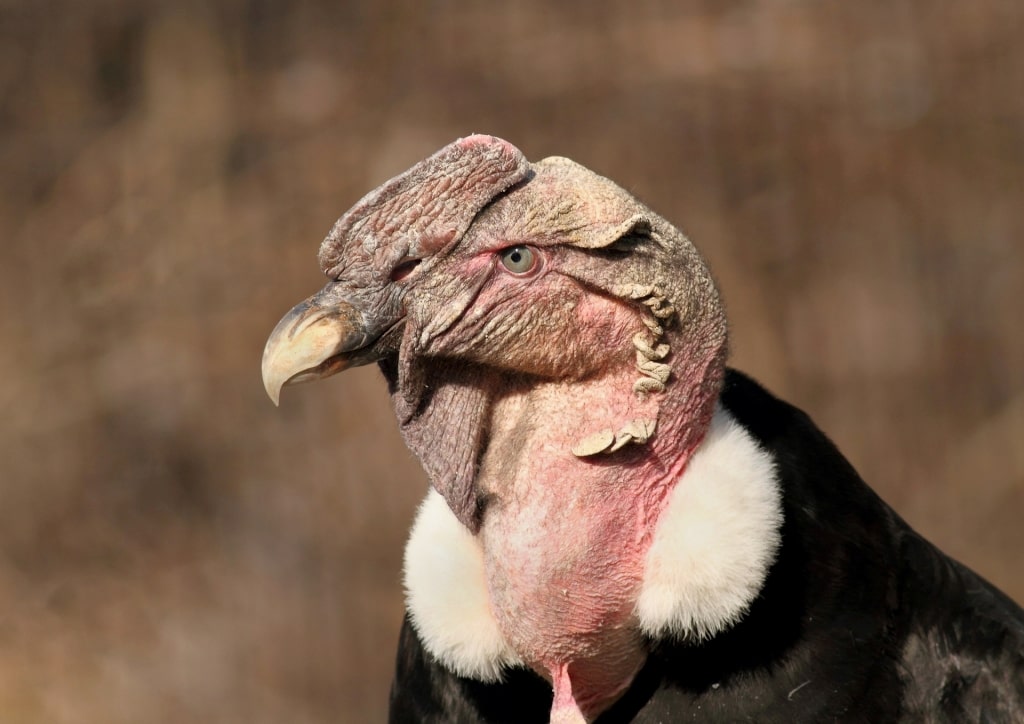
Andean Condor
Among the world’s very largest flying birds, the Andean Condor has a wingspan of over ten feet. A symbol of the Andean region and arguably the most majestic of birds in South America, it appears on the national crests of Bolivia, Chile, Colombia, and Ecuador.
Despite this high public profile, the bird faces extinction due to habitat loss, poaching and pesticides. It also has a very slow rate of reproduction, with a mating pair producing one chick every two years.
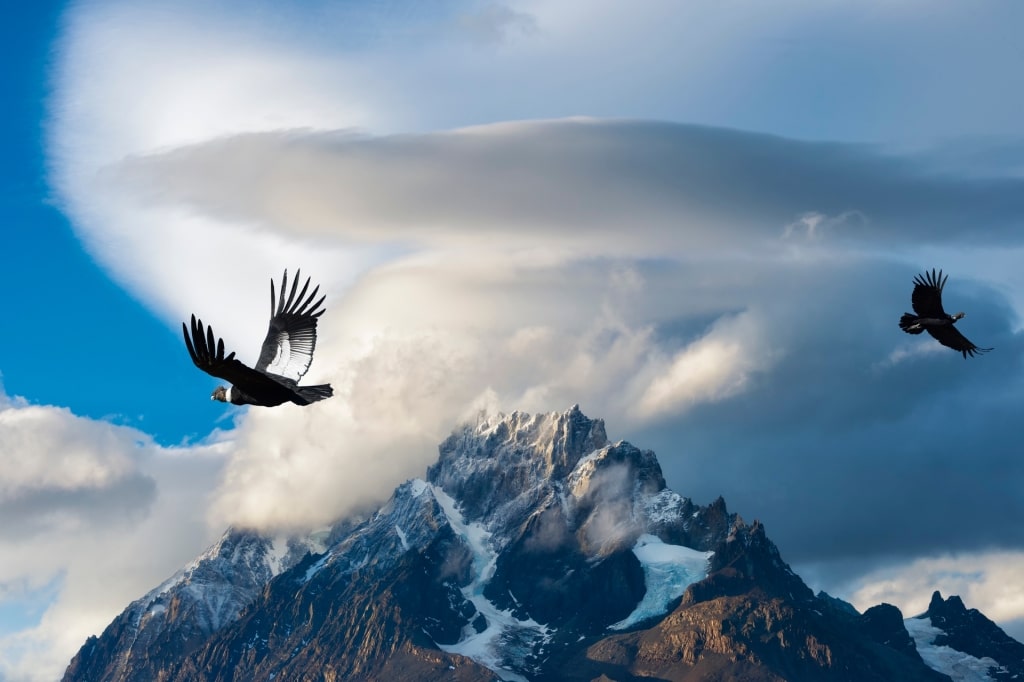
Andean Condor
Its huge size is adapted to its mountain habitat, where condors live at heights up to 16,000 ft. High altitudes and strong winds help these 30lb birds become airborne and soar for miles.
Andean condors are vultures, with the distinctive bald head of the species. Feeding on carrion, they perform an important function in clearing up dead wildlife.
Awe-inspiring in flight, they can be found throughout the Andes, from the Atacama to Patagonia. One of the best places to see them is Punta Arenas, Chile.
Read: Wildlife in Patagonia
King Penguin (Aptenodytes patagonicus)
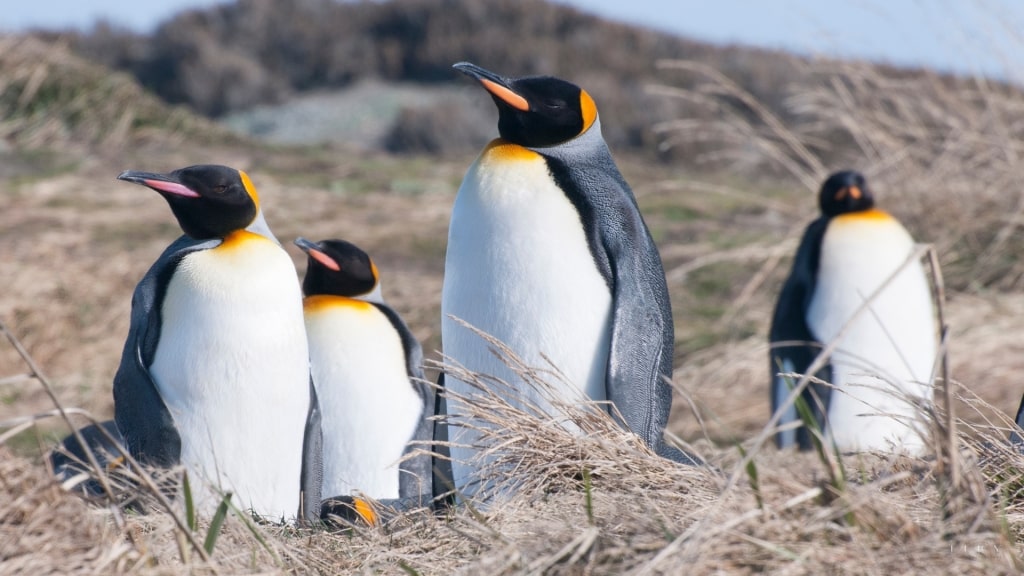
King Penguin
With more than a million breeding pairs, the King Penguin is not a rarity among South America’s birds. But who can resist seeing this wonderful flightless bird in its subantarctic island habitat?
The species was called “king” because it was thought to be the largest penguin. The Emperor penguin was recognized as a different species in 1884.
Even so, the males reach almost three feet in height and weigh up to 45 pounds. To support that, they can eat 2,000 fish a day.
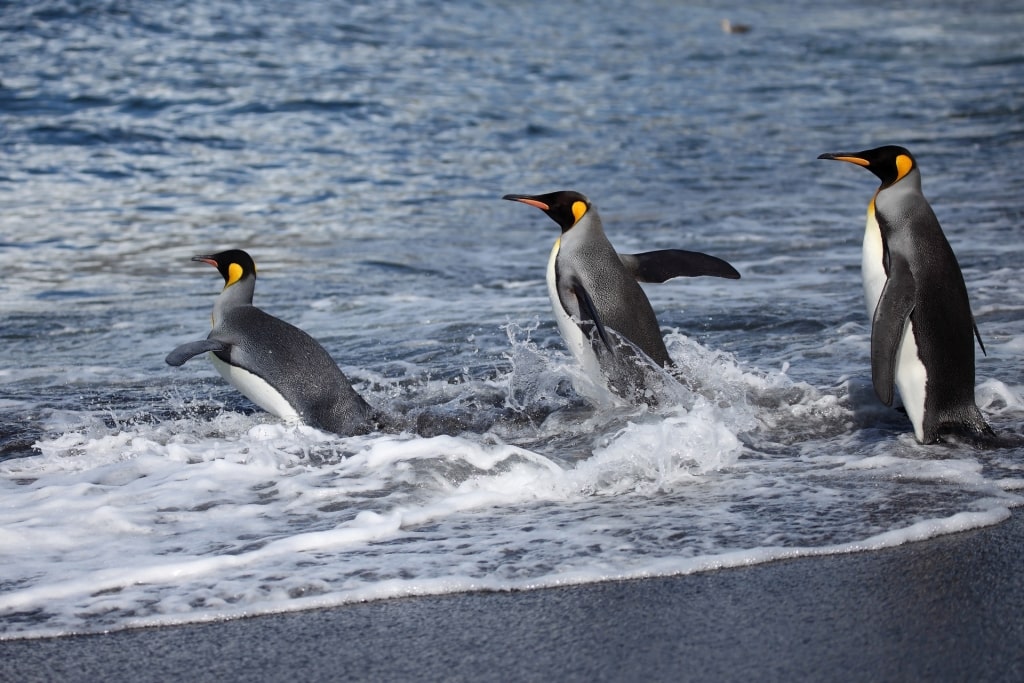
King Penguin
At sea, they throw off their somewhat comical air to become amazing swimmers. A king penguin can dive to an impressive 1,180 feet and has eyes adapted to the darkness at that depth.
You can recognize them by the orange-yellow feathers on the chest. The teardrop patches of the same color behind its eyes are also distinctive.
South Georgia has the world’s largest colony of King Penguins, with 200,000 pairs. You can also see these magnificent penguins in South America on the shores of Bluff Cove, Falklands, and Tierra del Fuego, Chile.
Toco Toucan (Ramphastos toco)
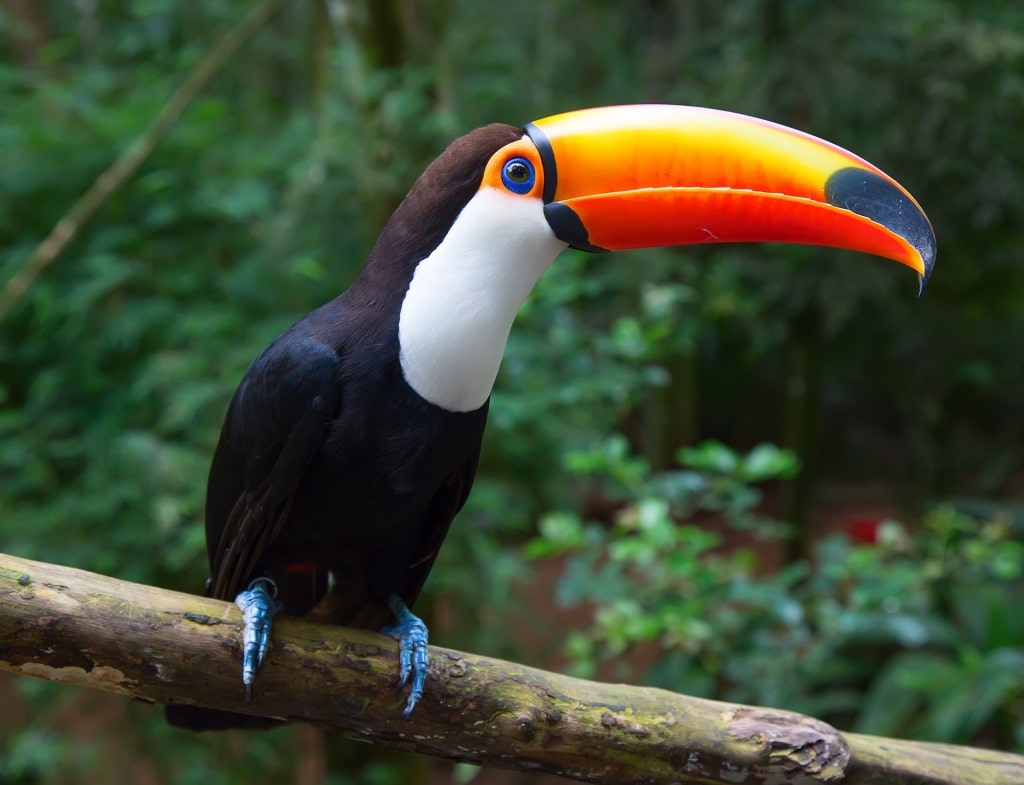
Toco Toucan
With a yellow-orange bill a third as long as its entire body, the toco toucan is a remarkable sight and one of the most handsome birds in South America. It lives in tropical forests, gathering in small flocks and making a frog-like din.
The bill is a lot lighter than it looks, being made of honeycombed keratine. Its length and serrated edge are useful to reach and peel the fruit it feeds on.
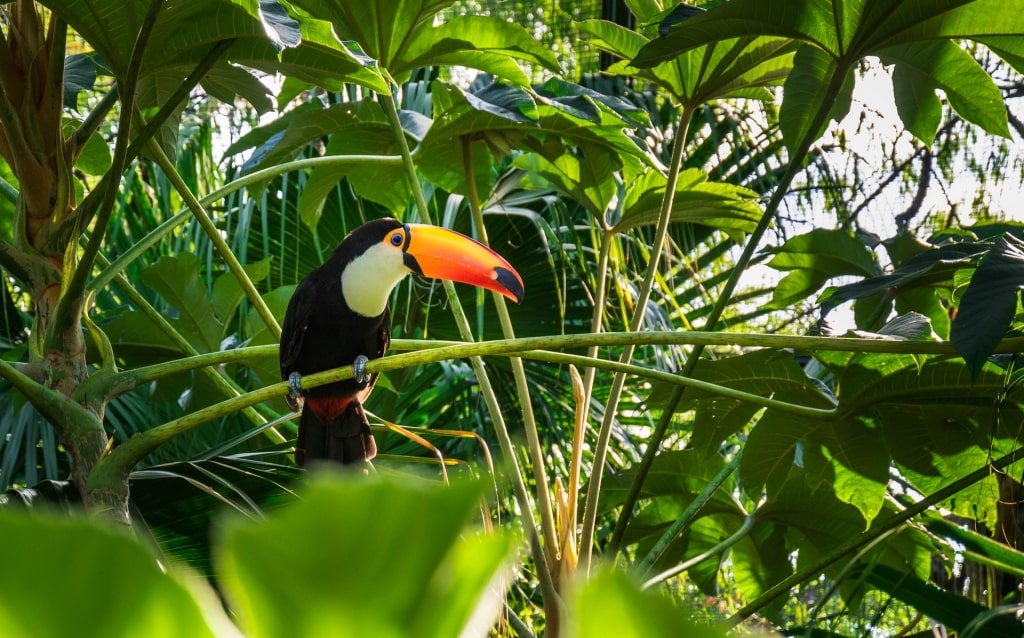
Toco Toucan
Despite that light weight, it’s no surprise that the unbalanced-looking bird prefers to hop rather than fly. Its bright colors actually work well as camouflage in the bright light and dark shadows of the forest.
Despite being hunted for the pet trade, toucans still occupy a huge range in South America. You may see them in eastern and southern Brazil, Bolivia, Paraguay, and into northern Argentina.
However, the best place to spot them remains Brazil. In São Paulo, Brazil, they have even become internet stars for attacking highway cameras.
Blue Footed Booby (Sula nebouxii)
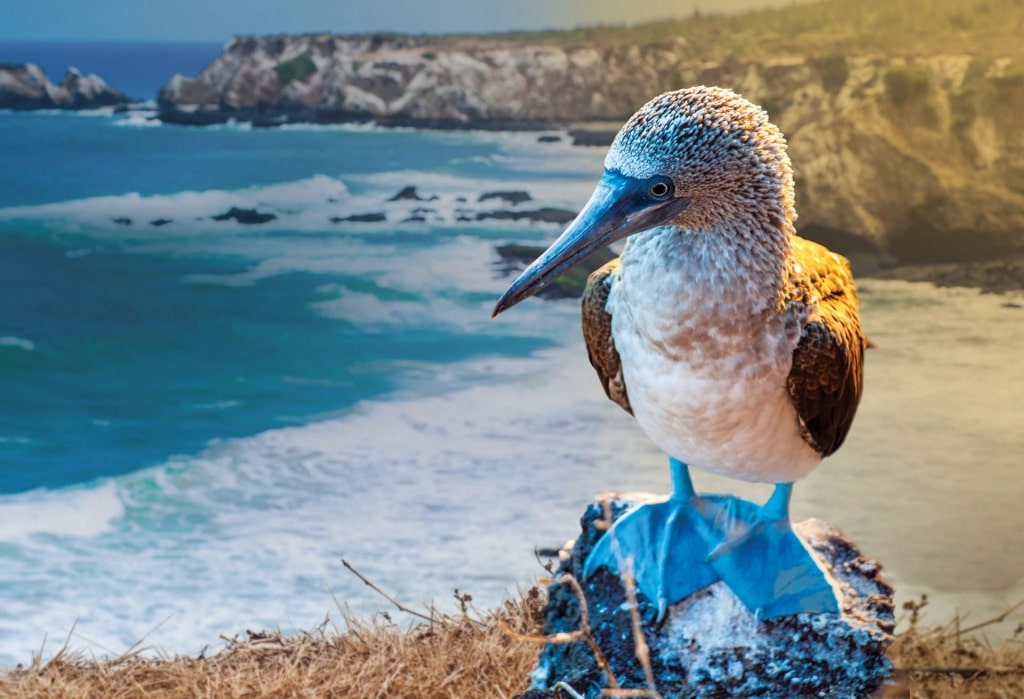
Blue-footed booby
Ungainly on land, these birds may take their name from the Spanish word “bobo”, meaning “fool”. However, once in the air they are remarkable flyers and divers.
They will plunge from 80ft in the air to take fish from the water. Small fish such as anchovies are their main prey but they also feed on squid.
Evolution has seen an odd adaptation to hitting the water at very high speed. Boobies now breathe through the corners of their beaks, with their nostrils redundant.
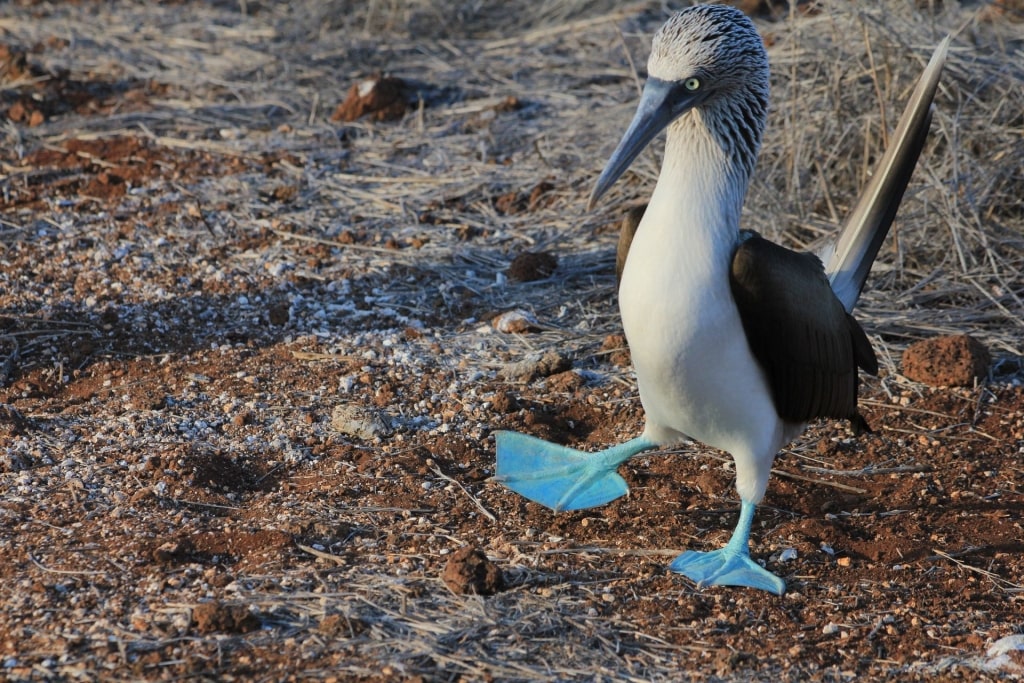
Blue-footed booby courtship dance
The “blue-footed” part of their name needs no explanation. That blue coloring is at its brightest during mating rituals.
Blue-footed boobies are found off the west coast of South America. The Galápagos Islands has around half the world’s breeding population.
With no natural predators, and a naturally curious outlook, these birds are fearless around humans. It is not unknown for them to land on small boats to check out those onboard.
Magellanic Woodpecker (Campephilus magellanicus)
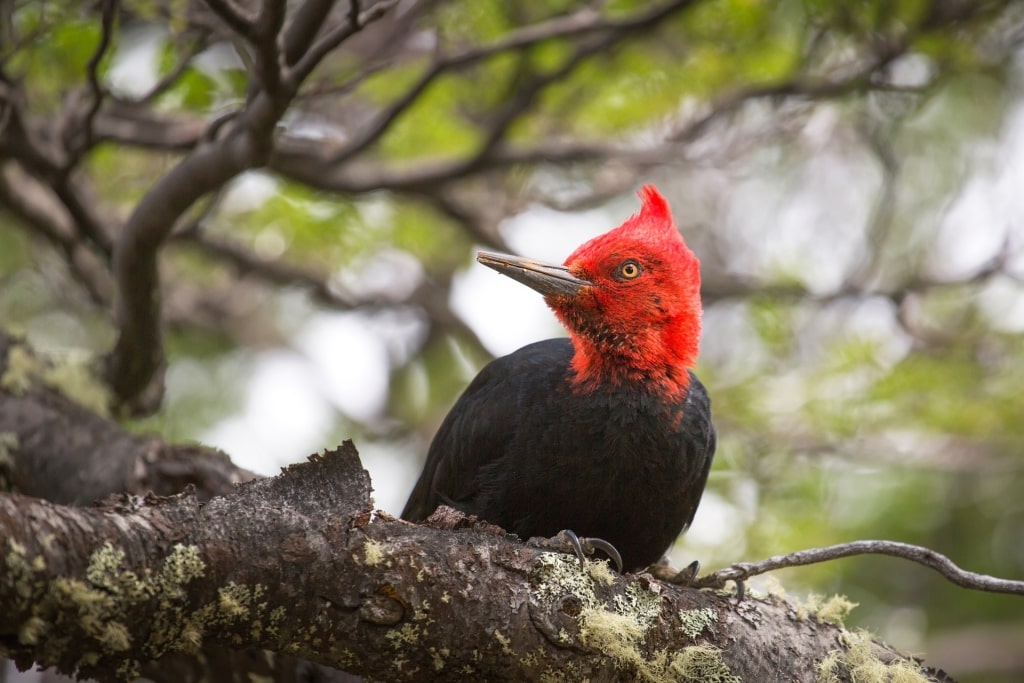
Magellanic Woodpecker
The largest woodpecker in South America is a striking black bird. Males stand out with bright red heads while females have only a touch of red on the bill.
Look for them in the Patagonian woodlands of both Chile and Argentina. You will also see them on Tierra del Fuego, one of the best places to visit in South America.
They feed on larvae, beetles and other insects, found by boring into living or dead trees. Lizards and the nestlings of smaller bird species may also be part of their diet.
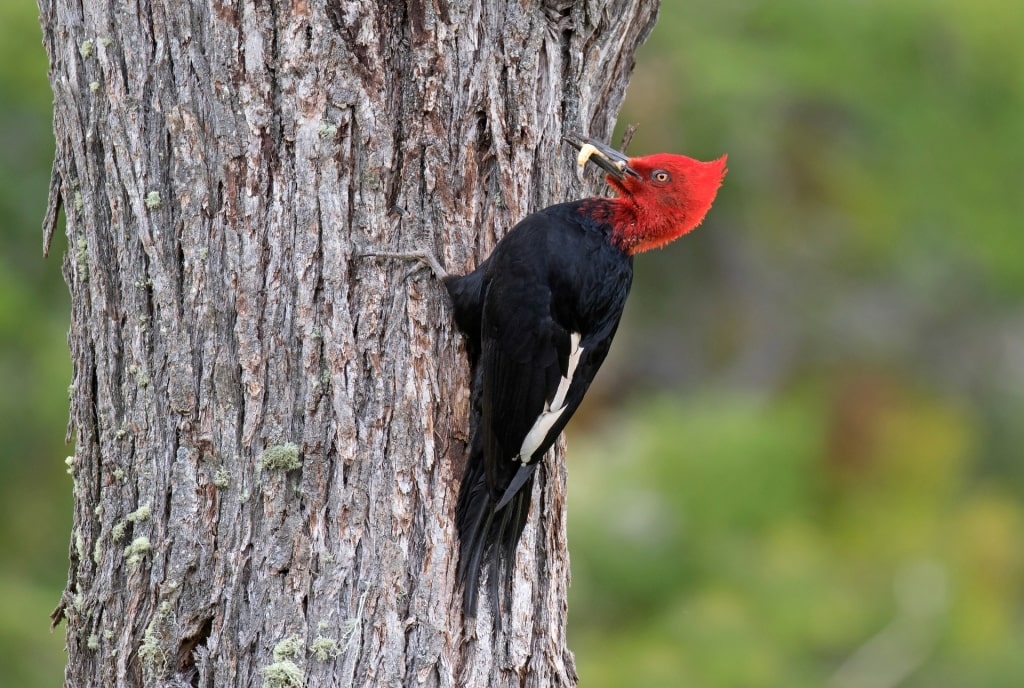
Magellanic Woodpecker
These highly energetic birds will forage all day from early morning. This energy carries over into fast flight that makes them difficult to spot in the air.
You will hear them long before you see them. The sound of them drumming into wood can be heard for long distances.
Larger holes are drilled by a pair for nesting and they will raise their chicks together. Fights to defend territory are common during the breeding season.
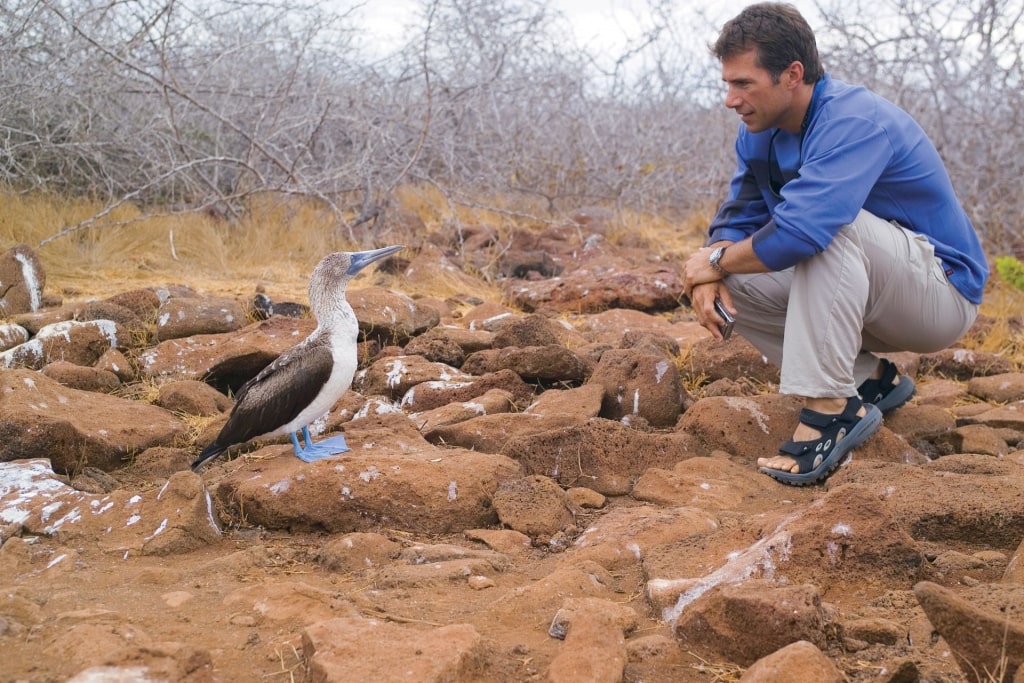
Galapagos
Looking forward to seeing these exotic South American birds in their natural habitat? Then browse our cruises to South America and make your dreams come true.
